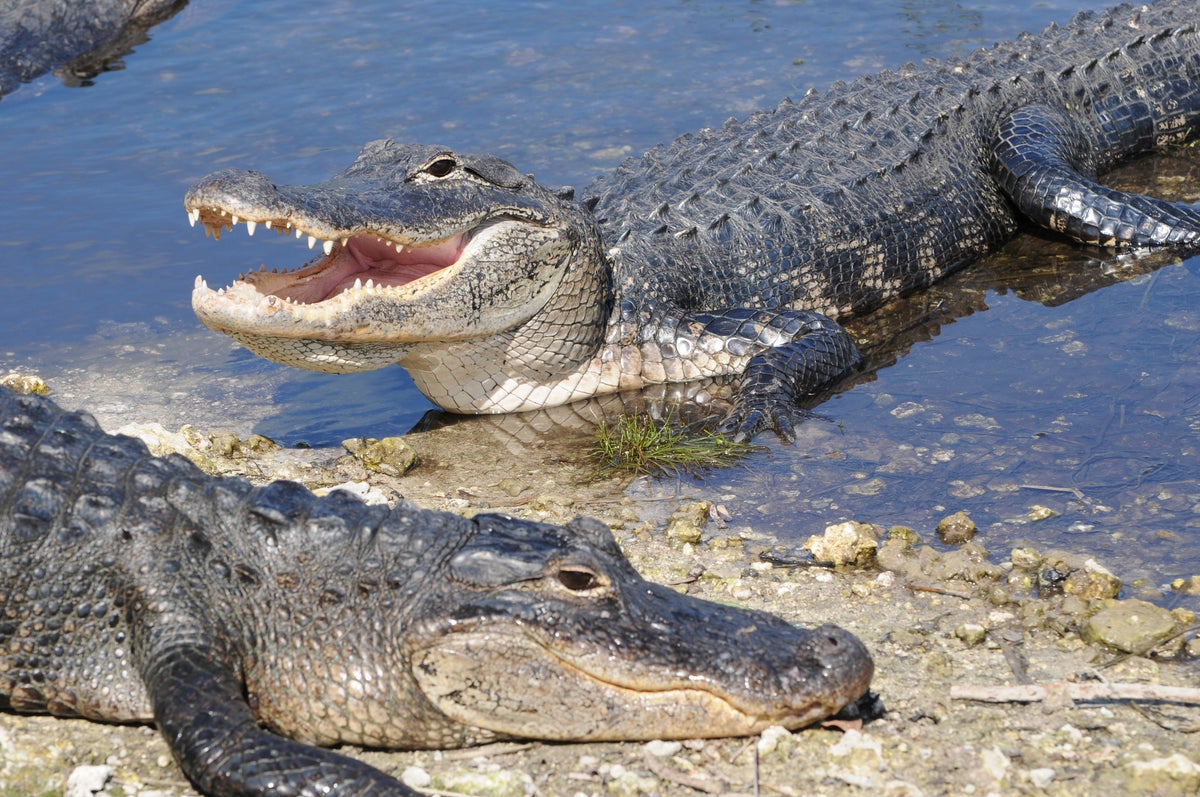
An 85-year-old woman has been killed in Florida after being attacked by a 10-foot alligator after she fought to wrestle her dog from its jaws.
The attack happened on the banks of a lake at the Spanish Lakes Fairways retirement community in Fort Pierce shortly after noon on Monday, with the Florida Fish and Wildlife Conservation Commission (FWC) responding to an emergency callout and subsequently locating the creature lurking in the water and taking it away by truck.
Tragic incidents of this sort are by no means uncommon in Florida but nor are they as prevalent as you might be tempted to believe.
The FWC estimates that the state is home to approximately 1.3m alligators of every size across its 67 counties, which offer around 6.7m acres of suitable wetland habitats for the animals.
The commission has kept a record of “unprovoked bite incidents” since 1948 and reports that, between that date and November 2021, there were only 442. Only 26 of those resulted in human fatalities.
It argues that human-alligator interactions become more likely the more time people spend beside the water but adds that “alligators seldom bite people and fatalities from such occurrences are rare”, estimating that the probability of being injured in an unproved attack stands at just one in 3.1m, with the three recorded deaths in both 2001 and 2006 very much exceptions to the rule.
Frank Mazzotti, professor of wildlife ecology at the University of Florida, told USA Today last summer that people are far more likely to die from drowning or by being attacked by a grizzly bear in Yellowstone National Park than by gator bite.
Alligators enjoy the balmy climes of the southern states and are also common in Louisiana and the Carolinas but can be found as far east as central Texas, although those states have not kept so close a record of attack data as Florida.
That said, South Carolina’s Post and Courier reports that the state recorded five deaths resulting from alligator attacks between 2016 and 2022 but none in the previous 16 years.
On the scale of the problem nationally, statistics differ depending on who you ask – but all are reassuringly low.
Centers for Disease Control and Prevention (CDC) data cited by Live Science records that gators killed 10 people in the southeastern US between 1999 and 2019, a period in which five times as many people died after being mauled by dogs and 12 times as many were struck by lightning.
Another study published in the peer-reviewed academic journal Wilderness & Environmental Medicine, which is older but goes back much further, records just 376 injuries and 23 deaths between 1948 and August 2004, amounting to just one death every three to four years.
That study called for a “uniform reporting system among states” to get a more complete picture of the problem of alligator encounters, something that has still not been realised.
Dr Joseph Forrester – a surgeon from Stanford University who has led studies into American deaths caused by venomous and nonvenomous animals based on the CDC’s data between 1999 and 2007 and again between 2008 and 2015 – told CNN that people’s focus is too often directed towards the wrong threats from the natural world.
“The most common animal-related fatalities are from large mammals, like cattle or horses, but when you’re looking at attacks from wild animals only, the most common cause of death are due to venomous animals, like wasps or bees,” Dr Forrester said.
“I think people have in their mind that the most dangerous animals are cougars, bears or alligators, but a bee is more dangerous if a person is predisposed to a reaction.”







